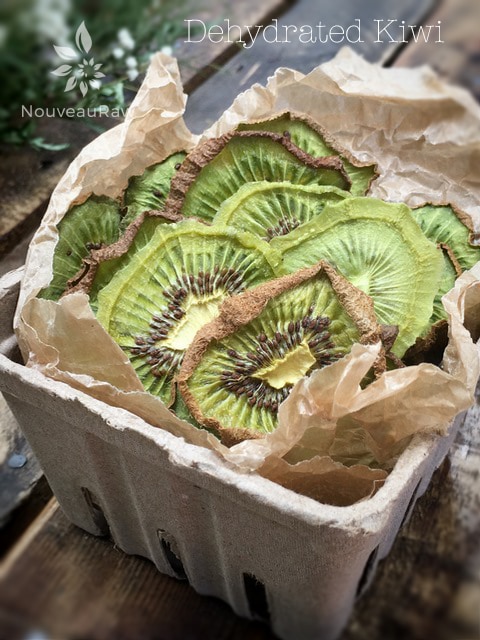


 Add to favorites
Add to favorites
~ raw, dehydrated ~
I want to start off by clearing up the fact that I am referring to drying kiwi FRUIT, not the kiwi BIRD! I had no idea there was such a thing since they don’t live or migrate to my neck of the woods, but just in case they are a typical bird where you live… I didn’t want you to think that I dehydrate birds. :)
Kiwi contains a rich supply of minerals and vitamins important for our health. Kiwi is in the ‘most alkaline’ category of fruits, helping you obtain alkaline balance and counteracting the excess of harmful acidic foods in your diet. Kiwi is also a great source of vitamin C, a nutrient proven to boost the immune system. And we can always use a little extra of that!
Let’s take a moment and talk about the fury exterior of this fruit. Can you eat it? The answer is absolutely! The kiwi fruit skin is completely edible and makes this nutrient-dense fruit even more nutritious! Studies have shown that eating the skin triples the fiber intake compared to merely eating the flesh. And by not peeling the skin, you preserve much of the vitamin C content as well.
I for one, haven’t ever eaten the skin… I guess it just never seemed appealing but next time, I am going to give it a try. My only word of caution is to only eat the skin if you know that it hasn’t been sprayed with pesticides and/or other chemicals.
How to select the perfect kiwi… Just as we are told, not to judge a book by its cover … Don’t judge a kiwi by its skin. They may all look the same on the outside, but when it comes to eating satisfaction, it’s the inside that counts. Look for firm, unblemished fruit, and don’t worry about the size — smaller kiwi taste just the same as larger ones. When it comes to flavor, size doesn’t matter! Gently press the outside of the kiwi with your thumb. If it gives to slight pressure, the kiwi is ripe. If it doesn’t give to pressure, it’s not ready to eat. The main thing that we always want to remember when dehydrating fruit is to use good quality, ripe fruit. I think many people have a misconceived idea that if we dehydrate unripe or overly ripe fruit, it is a good way to use it up. If you start the process with bad fruit, you will just end up with badly dehydrated fruit.
 Ingredients:
Ingredients:
My kiwi slices turned brown. Why?? They still taste good but don’t look like yours. I do not have a fancy dehydrator that you can gauge the temp. It has on and off. I am a beginner at this and want to get better.
Hmm, Hello Heidi,
Not sure why they are turning brown. Thoughts that come to mind are; How long did you dry them for? Where they vibrant and ripe (without bruising) before drying? Since you don’t know what temp your machine is running at, I would suggest getting a thermometer so you can see how hot it is getting. It sounds like they could have been dried at too high of a heat for to long. This happened to me one time with bananas that I plum forgot about and they literally burnt! Let’s start there. amie sue
Question: if using a dehydrator, do we start dehydrating at 145 degrees for 1 hr, then decrease to 115 for the remainder of time? Or does this vary depending on the fruit?
Good afternoon Mari,
Yes, you certainly can. The only thing I watch for is how thin the fruit might be sliced. If really thin, it might actually effect “cook” it too much, affecting the enzymes. Thanks for the question, I hope this helped. Blessings, amie sue
I’ve found that getting the skin off a kiwi is much easier with a spoon. Cut the top and bottom like normal and slide the spoon carefully under the skin. Twist it around slowly. 90% of the time, I get the skin off without breaking it and no flesh lost!
Oh yes, another great way to enjoy a kiwi! Thanks for sharing. :) Kiwi’s are spendy, we want to get the most of them! Though, I have known people who even enjoy eating them with the skin left on… not my thing but… Have a blessed day, amie sue